Cold Weather Palm Trees That Can Fight The Winter Months
For a short duration, palm trees can bear a temperature up to 10-15° F
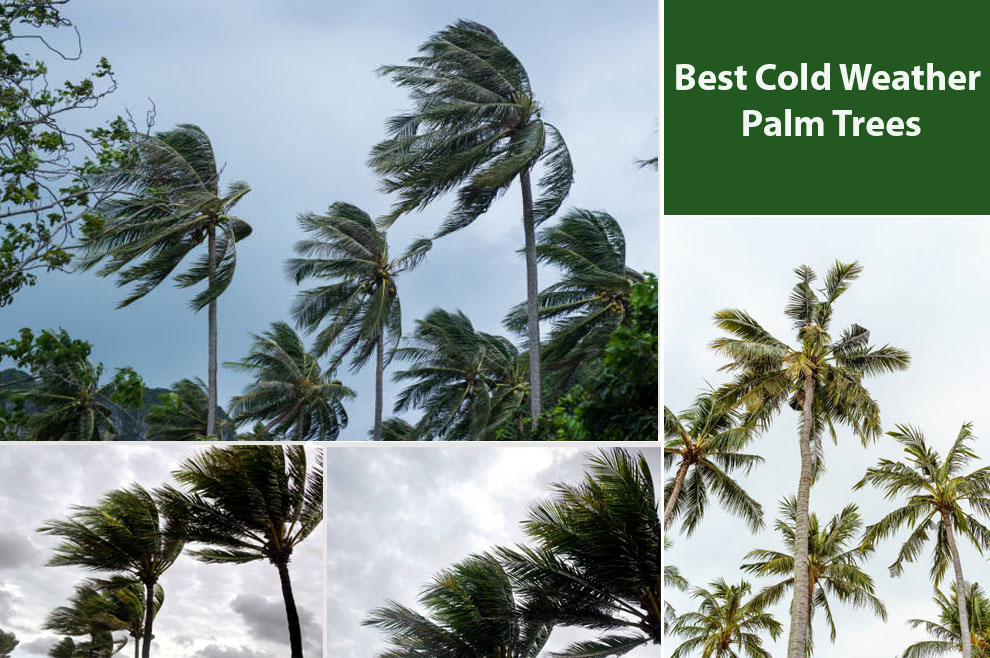
Whenever someone grows plants in their backyard, the first question that hits their head is – Can this plant survive in my location all seasons? The concern is graver if you intend on planting palm trees in your yard. But, fortunately, a specie within the Arecaceae plant family, some palm trees are capable of handling brief cold weather stints. They are known as the cold weather palm trees.
But how cold is too cold for the palm tree? The answer entirely depends on the chosen palm variety. However, some palm species can survive between 20-30 degrees Fahrenheit for a season. But, a typical palm grows best at 40-degree Fahrenheit.
Thus, one cannot guarantee that a palm can thrive in zones five through seven after a harsh winter. So, before planting, you must be sure that you only choose palm trees that can survive cold weather. The safest route is picking the varieties that suit your USDA growing zone.
Sadly, not many palm tree varieties can withstand extended cold weather or several months of frozen and hard ground. But, depending on your adopted preventive measures or the chosen specie, the cold climate palm trees can outlive a winter sans any challenges. The hardiest palms are those native to North America’s temperate climates and Asia’s mountainous regions, where the temperature is low at high elevations.
Not every type can withstand the freezing temperature for over a few weeks. Hence, only a few varieties of cold-tolerant species can survive limited exposure to frost and snow.
So, which are the best palm trees that can survive cold weather? Continue reading to find out.
Best Cold Hardy Palm Trees
1. Windmill Palm
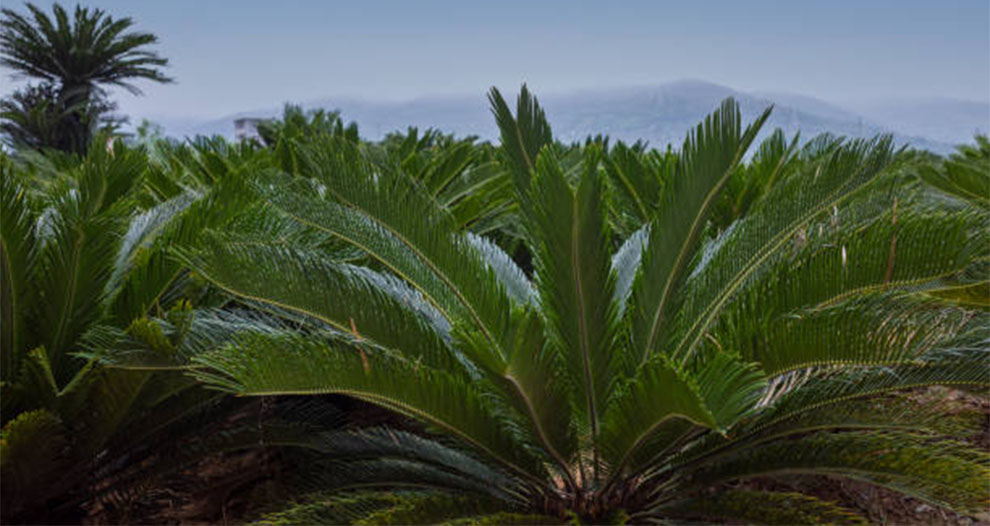
| Hardiness zone | 7 through 11 |
| Height | 40 feet |
| Sun | Partial shade |
| Temperature | Can handle temperatures as low as 0° F to 5° F |
Also known as Chusan Palm, the Chinese Windmill Palm is cold hardy and one of the best palm trees for cold weather. This resilient tree has thick leaves and a trunk that looks like a fan rising at the top. The plant can tolerate partial shade and wind. Hence, it requires the sun to moderate levels and water only twice a month.
2. Queen Palm
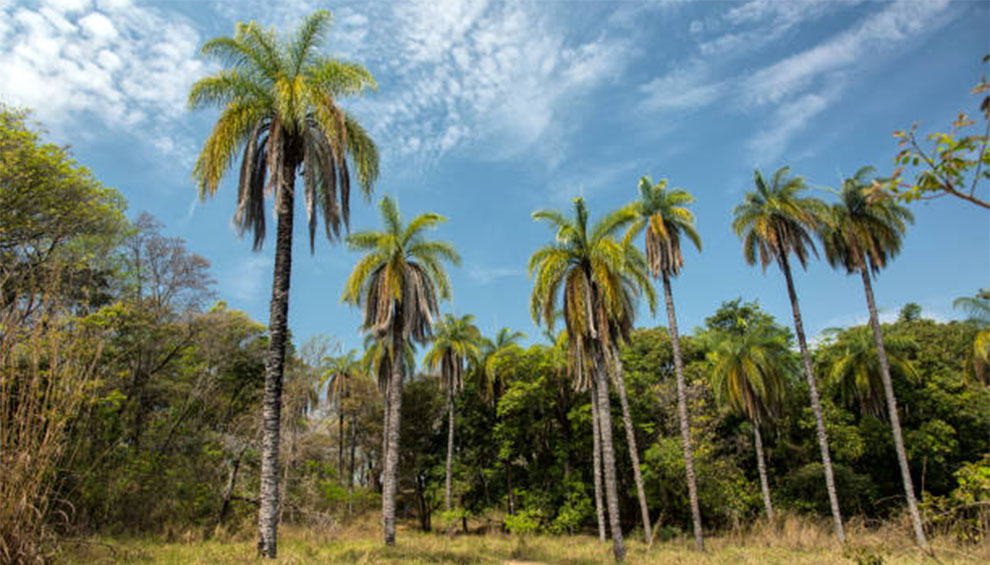
| Hardiness zone | 7 through 11 |
| Height | Sixty feet |
| Sun | Full Sun |
| Temperature | Hardy to 25° F |
Botanically called the Syagrus romanzoffiana, Queen Palm is an elegant, single-trunk palm common in landscapes across subtropical and tropical regions like South Florida and Southern California. These cold weather palm trees retain their colors across the year.
In the summer, you will see plumes of creamy white flowers, and the trailing orange fruit clusters show in the winter. Queen Palm has a standard palm tree shape with graceful arching fronds on the top of the trunk.
Its fronds are about 15 feet long that become brown or yellow as they grow older. While it is fast-growing in the warm season, it grows slowly in the cold weather.
3. Bismarck palm
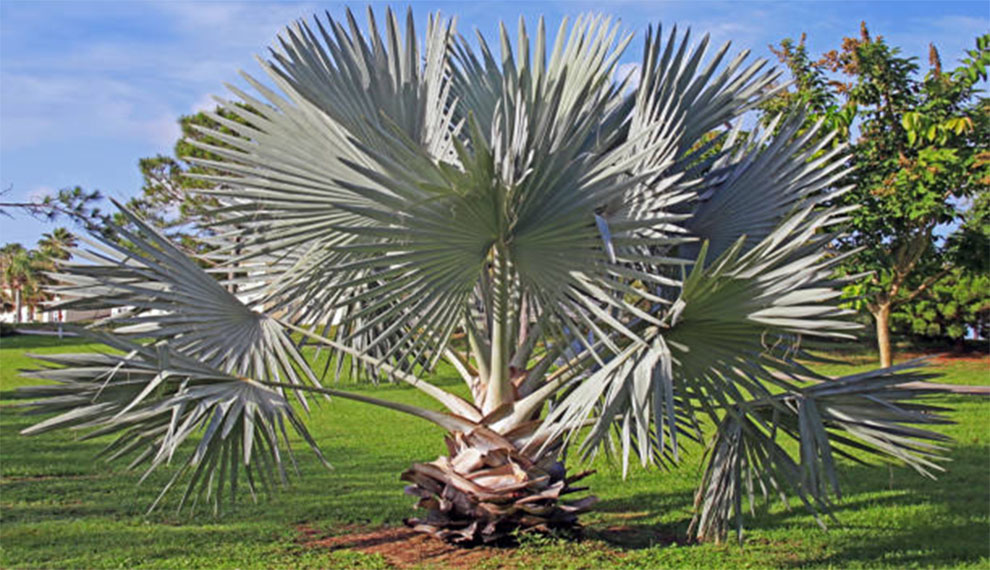
| Hardiness zone | 10 through 11 |
| Height | Seventy Feet |
| Sun | Full sun or part shade |
| Temperature | The lowest temperature for palm plants is 30°F. |
Native of Madagascar and famous for its ornate appearance, the Bismarck Park has a round, thick trunk with an interwoven leaf base, which yields cerulean fronts in a fan-like, wide, and vibrant pattern. Botanically called the Bismarckia Nobilis, these trees are low-maintenance and resilient to short-term fronds. It can be an excellent focal point for any landscape.
4. Pindo Palm
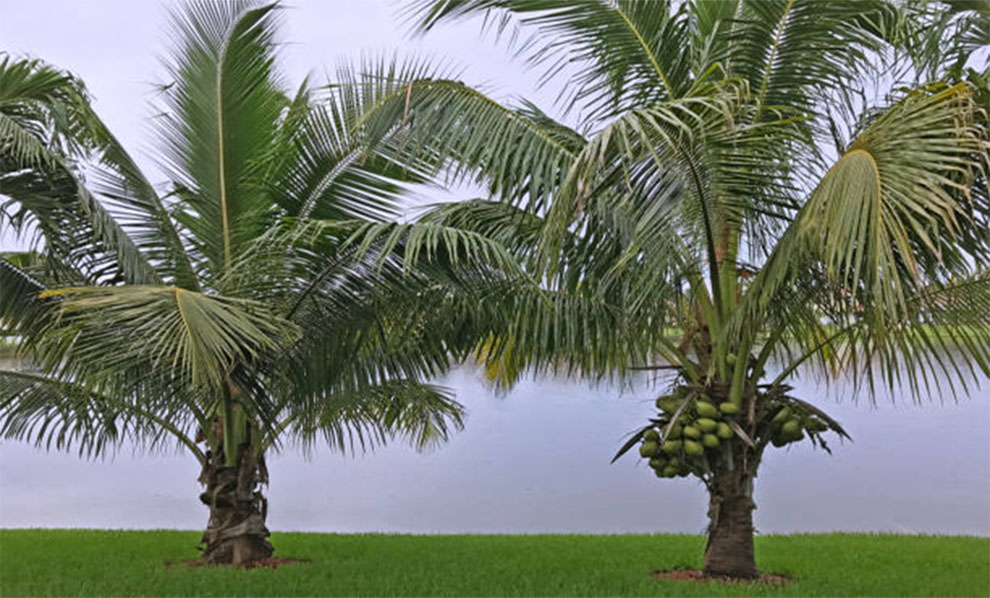
| Hardiness zone | Six through Eleven |
| Height | Between 15 and 20 feet |
| Sun | The plant needs lots of full sun and direct sunlight. |
| Temperature | The lowest temperature for palm plants is 12 to 15 F. |
Botanically known as Butia Capitata, Pindo Palm is a cold hardy variety that can handle temperatures as low as five degrees Fahrenheit. So, you can effortlessly grow these palms in British Columbia and New Jersey. Also known as Jelly Palms, the Pindo Palms grow to a medium height with a trunk diameter between 1 to 1.5 feet.
Its flowers can be yellow, white, or red and occur in groups of one female and two male flowers. The plant produces fruits that are often used for making jellies. Its seeds can be roasted as a coffee substitute. These are specimen palms and attract wildlife with their sweet fruit.
5. California Fan Palm
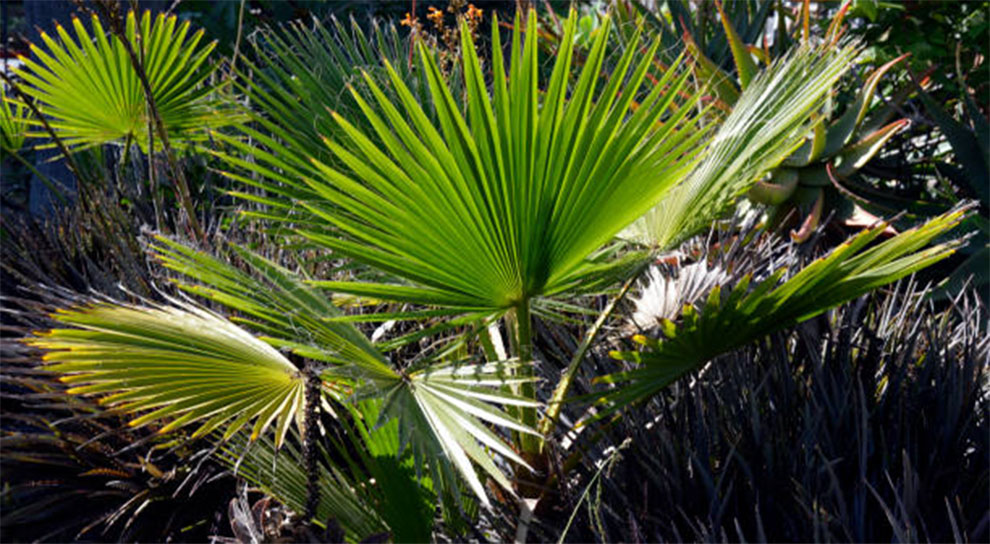
| Hardiness zone | 8B through 11 |
| Height | 49-66 feet |
| Sun | Full sun – at least 6 to 8 hours each day is preferred |
| Temperature | The tree can survive temperatures as low as 15 degrees Fahrenheit. |
Also called the Desert Fan Palm, the California Fan Palm is native to the US, Baja California, and Mexico. These are drought-tolerant palm trees that can easily survive the cold. Native to the deserts of the southwestern, its trunk is fire-resistant and offers shelter to various desert-living insects, bats, and birds.
These are the only plants found in the western US wherein they can tolerate freezing winter and hot summer temperatures. The plant offers shelter and shade to wildlife and many birds. Its fruits ripen and drop in winter.
6. Lady Palm
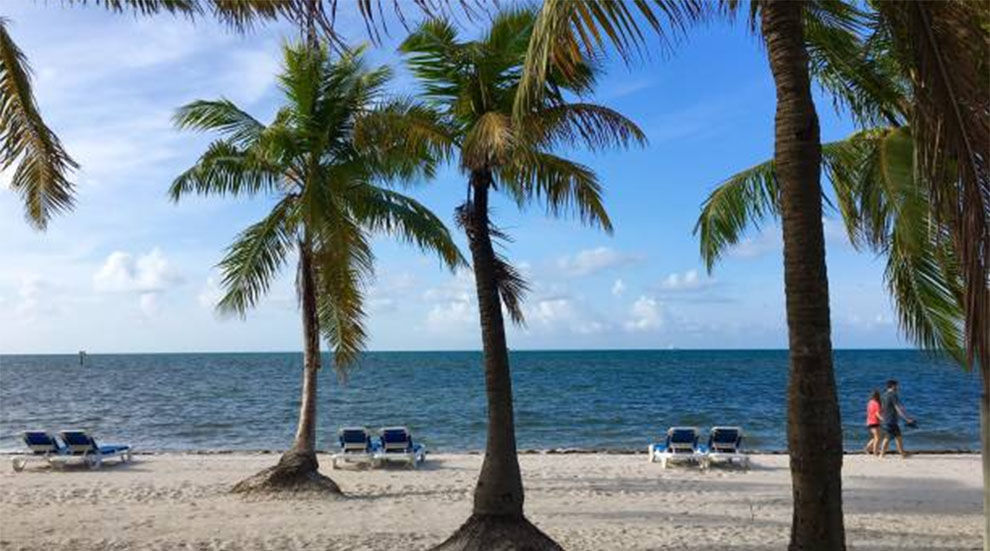
| Hardiness zone | 9 A through 11 A |
| Height | Between Six and Fifteen feet |
| Sun | Partial shade to full sun |
| Temperature | 18-degrees Fahrenheit |
Fondly called the Bamboo Palm, Lady Palm is a shrubby, small evergreen palm plant with bamboo-like stems. These cold climate palm trees are shade-loving species that are easy to grow. Lady Palm has fan-shaped, dark-green leaves capable of handling temperatures as low as 18 degrees Fahrenheit.
Native to Southern China and Taiwan, the plant grows best as a foundation plant, indoor palm, or mixed shrub borders, in shady locations.
Related:How to grow lady palm?
7. Needle Palm
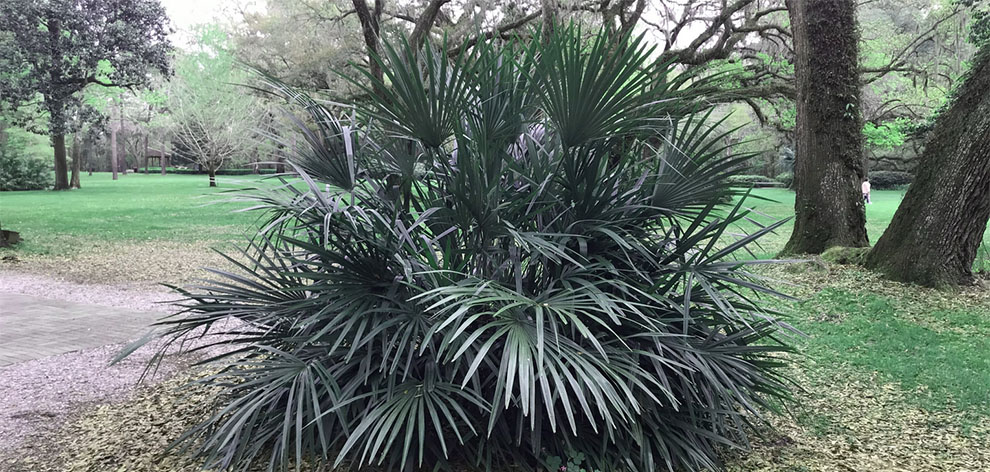
| Hardiness zone | 5B through 11 |
| Height | About six feet |
| Sun | Full sun and partial shade |
| Temperature | -10° F (-23.3° C) |
It is one of the best palms for the cold weather and is found in America exquisitely. It is a dwarf shrub with a three feet diameter. The plant has evergreen leaves with needles, which make it cold hardy, and resilient to temperatures as low as -10° F (-23.3° C).
But, Needle palm seeks hot summers to be healthy and grow well. The plant hates salt spray. So, be careful if you reside in an area near the sea. Needle palm loves frequent watering and enjoys both shade and sun.
8. Mexican Fan Palm
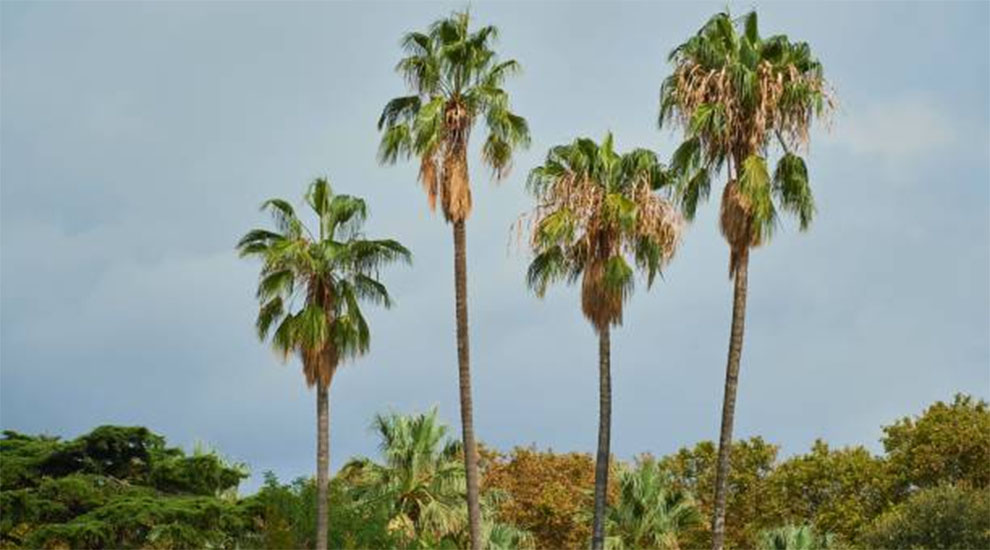
| Hardiness zone | 9 A through 11 |
| Height | 40 to 60 feet |
| Sun | Full |
| Temperature | Down to 15 degrees F but temperature lower than 23 degrees F might damage leaves |
Hardy down to 20 degrees Fahrenheit, it is one of the more popular cold weather palm trees that can be grown indoors and outdoors. The tree has a single trunk with fan-shaped, arching leaves, which grow to five feet. If you do not prune the tree regularly, the dead leaves develop a hula skirt around the trunk.
The plant has moderate drought tolerance, but with the proper water, it grows better. Native to desert regions of Mexico, the plant thrives in full sun.
9. Cabbage Palm
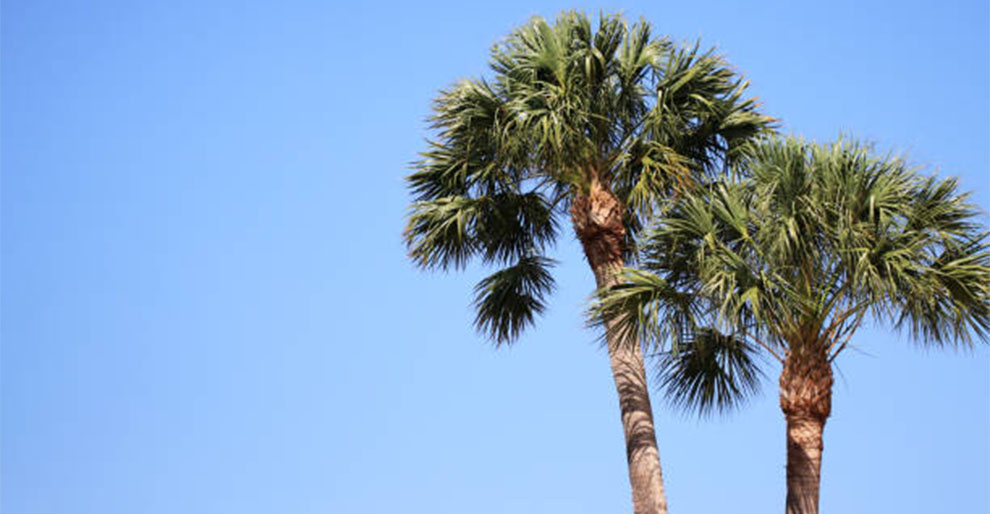
| Hardiness zone | 7 through 11 |
| Height | Between thirty and fifty feet |
| Sun | Full sun or partial shade |
| Temperature | 10-15 F (sometimes even 8 degrees, but for a brief period) |
Botanically called Sabal palmetto, the Cabbage Palm lives up to 150 years. It is an evergreen, elegant palm having a single trunk with a round, full canopy of costapalmate. It is a state tree of South Carolina and Florida, capable of tolerating temperatures as low as 10-15 F. However, some can tolerate temperatures as low as eight degrees, but only for a brief period.
It is one of the best palm trees for cold weather that develops a trunk in almost a decade. Native to Florida, Carolina, and the Gulf of Mexico, the Sabal Palm has a slender, long trunk, like the Mexican Fan Palm.
10. Date Palm
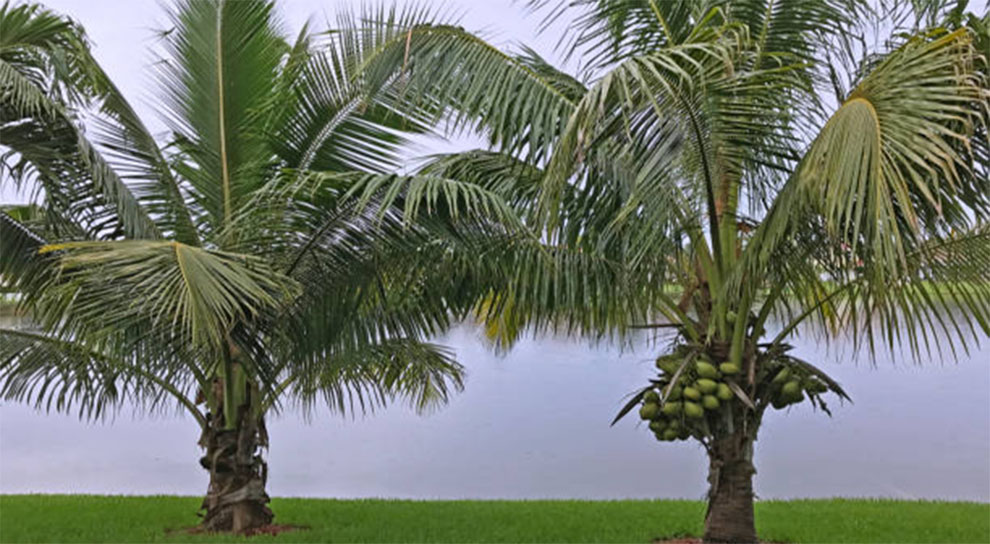
| Hardiness zone | 8 through 11 |
| Height | 50 to eighty feet |
| Sun | Full sun |
| Temperature | Hardy down to 15 degrees Fahrenheit |
It is a pinnate-leaved specie and a classic palm tree having feather-like fronds, arching, and a tall trunk. The female trees yield creamy yellow flowers, which later become edible fruits. These palm trees that can survive cold weather are one of the oldest and the most cultivated palm trees.
Native to the fertile crescent region of the Middle East, you will see it as a frequent occurrence in the urban landscape. You can also find dwarf cold hardy date palms, which work as good indoor specimens.
11. Mazari Palm Tree
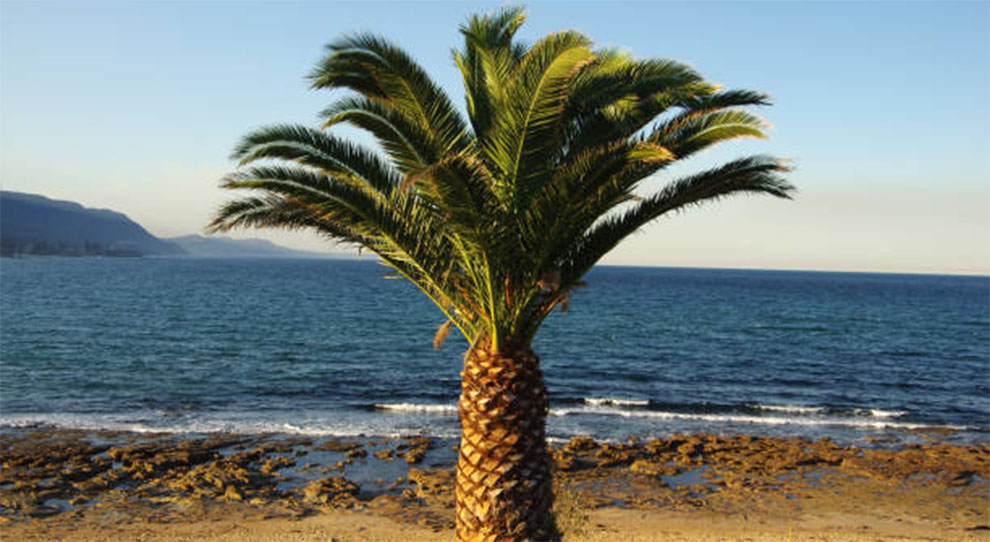
| Hardiness zone | 6b through 11 |
| Height | 10 – 20 ft tall |
| Sun | Full sun, but can grow in partial shade |
| Temperature | Hardy down to 4 degree Fahrenheit |
It is one of the stocky palm trees that grow in cold weather. The plant has spiky fronds that make it an excellent pick for the tropical backyard oasis, even in locations where it snows. It is one of the hardiest palm varieties and can withstand temperatures as low as 4°F or -20°C.
Given the plant’s shorter size, it must be frost protected and covered well. The plant thrives in dry, hot summer months too. Here’s how you can protect your palm trees in winter.
12. Blue Mediterranean Fan Palm

| Hardiness zone | 7b through 11 |
| Height | 15 feet |
| Sun | Full sun to partial shade |
| Temperature | It can endure temperatures as low as 5 degrees F. |
It is a beautiful, striking gray-blue palm tree known for its striking looks. The plant looks different from an average palm, but it is cold hardy, and an excellent inclusion in any homeowner’s landscape, given its ability to withstand the cold. The plant grows well in areas where temperature occasionally reaches 5°F or -15°C. It is a slow-growing palm but can grow up to 15 feet.
Palm Tree Directory: Palm Tree Growth Rate | Palm Tree Lifespan
Frequently Asked Questions
Ques 1. How cold can palm plants tolerate?
Ans. The answer entirely depends on the chosen palm species. However, some cold weather palm trees can survive between 20-30 degrees Fahrenheit for a season. But, a typical palm grows best at 40-degree Fahrenheit.
Ques 2. What temperature will kill a palm tree?
Ans. Palms trees may die when the temperature drops below 20 degrees for a prolonged duration, especially if it is a rapid drop. Keep in mind that this does not apply to the varieties of palms. There will always be some exceptions.
Ques 3. What is the most cold-tolerant palm tree?
Ans. Windmill Palms (Trachycarpus fortunei, T. takil) are the most cold-hardy palm tree.
Ques 4. How to care for a palm tree in winter?
Ans. Here are some tips for caring for a palm tree in winter:
- Shield the trunk. Since the trunk transfers the water to the leaves, you need to take measures to guard it. You can wrap it with a blanket or burlap, topped with a layer of Christmas-type lights that generate heat. Some even prefer wrapping the trunk with fiberglass-type insulation, followed by bubble wrap.
- Cover the trunk-less palms with a frost blanket and add warmth-generating LED lights.
- Mulch the small plants by covering the crown and the base, but do not smother the plant. You can guard the whole plant by adding a blanket or box over the leaf mulch.
- Ensure that you do not cover the palm fully for over three days.
- Guard the buds at all costs because if the buds die, even the palm will die. If the wet conditions linger, the tip is susceptible to diseases. Spraying leaves with a copper fungicide some days before the cold snap to kill disease organisms might help.
